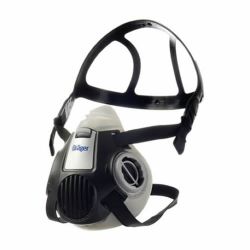Paint respirators & masks
Why use a paint respirator? Classic paint is made of resins, organic solvents, pigments, fillers and additives. In water-based paints, water replaces organic solvents, however, a certain amount remains, usually alcohols and glycol ethers derivatives. Several models are available depending on the application and type of paint ...
Even if their toxicity is lower, they are not safe and using a paint respirator is strongly recommended to ensure protection of painters respiratory tract. In most cases, a half-mask (nose and mouth protection) will be sufficient, but for applications using irritants such as certain varnishes or sprays, a full mask with eye protection in addition will be necessary.
-
-
-
-
-
-
-
Fresh air supply system DUCT A ECO, Supplied air respirator (tank cleaning)
Starting at $1,728.73Quickview -
The paint respirator mask
Whether using classic paint, waterborne paint or paint with solvents, many components can have various effects on health: pulmonary pathologies, dizziness, allergies, dermatosis, some substances can also enter the blood stream resulting in hepatic injuries or hormonal disorders. The painter profession is even classified as carrying cancer risks by the International Agency for Research on Cancer of the WHO (world health organization) and the use of paint respiratory protection is strongly recommended.
It is important to know that professional painters are not the only ones subject to paint related health risks. Indeed, the occasional use of paint can also induce health effects and requires the use of a proper paint respirator mask.
A2P3 paint respirator
Craftsmen, professionals and artists working with paint can be occasionally or repeatedly exposed to solid and liquid particles (like thin droplets, or aerosols for example), gas and organic vapors (alcohols and glycol ether derivatives for example).
While using classic or water-based paint an A2 (gas and organic vapors) and P3 (solid and liquid particles) combined filter is recomemended with a paint mask. A2P3 combined filter cartridges offer adequate respiratory protection against paint toxicity.



